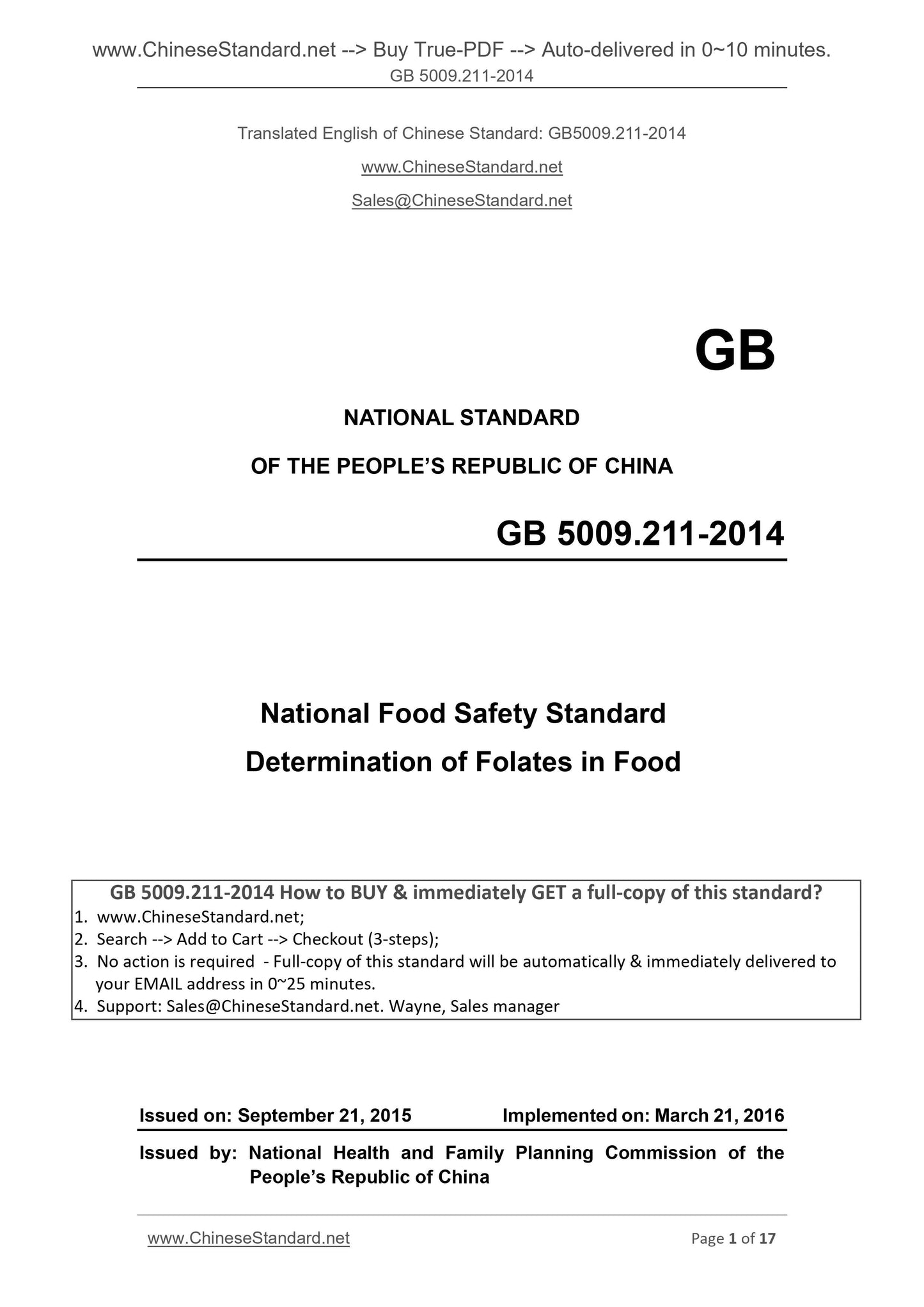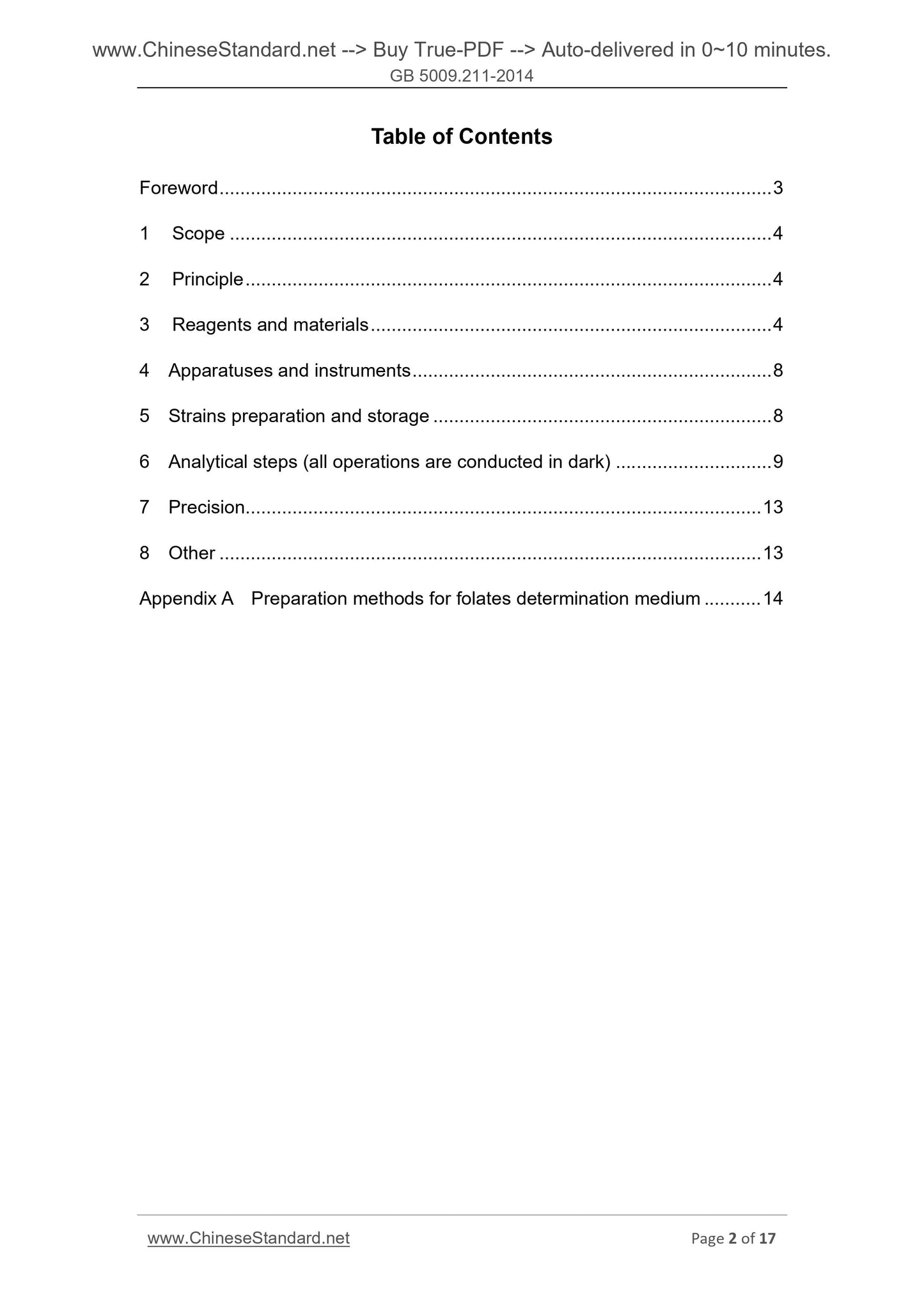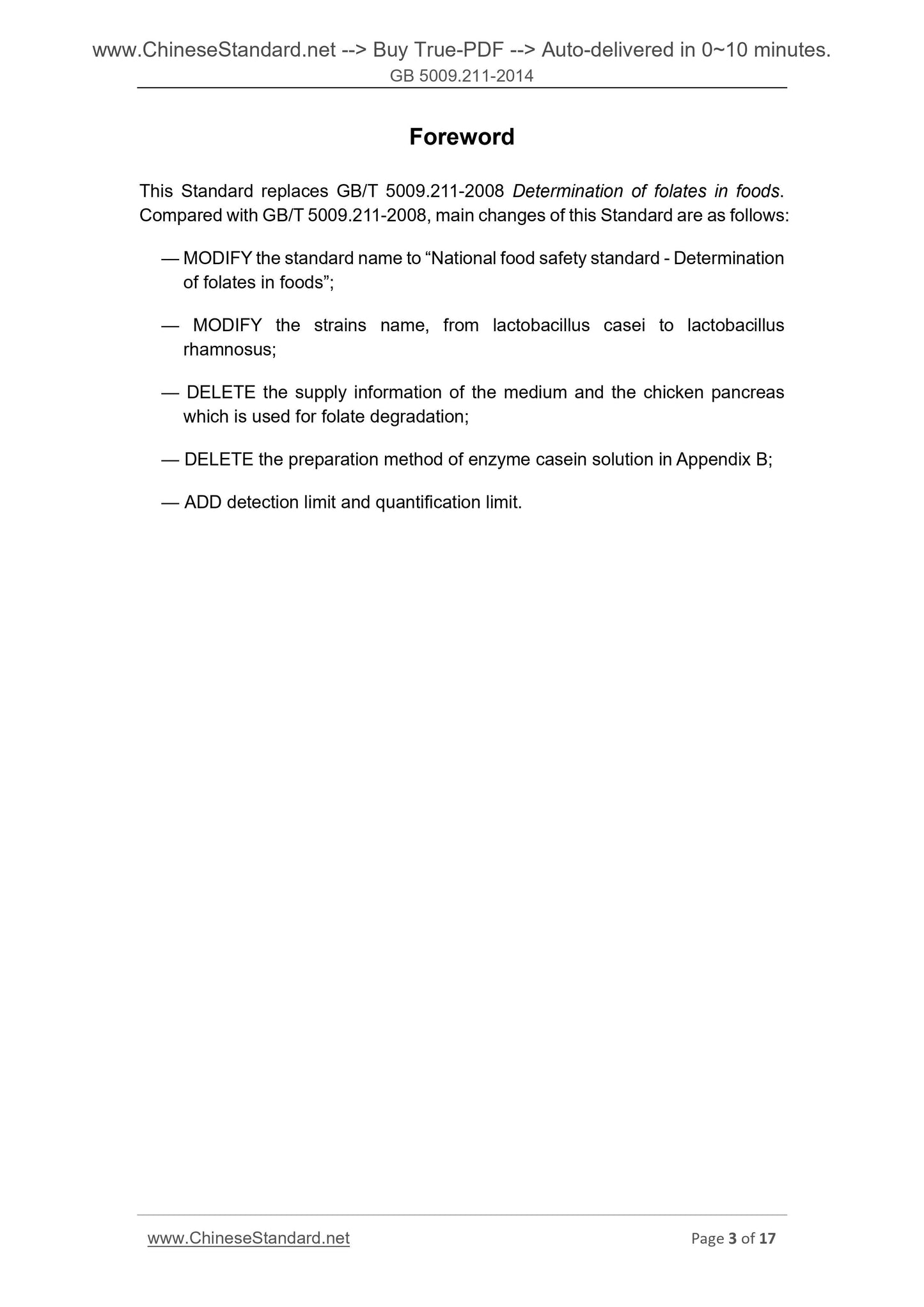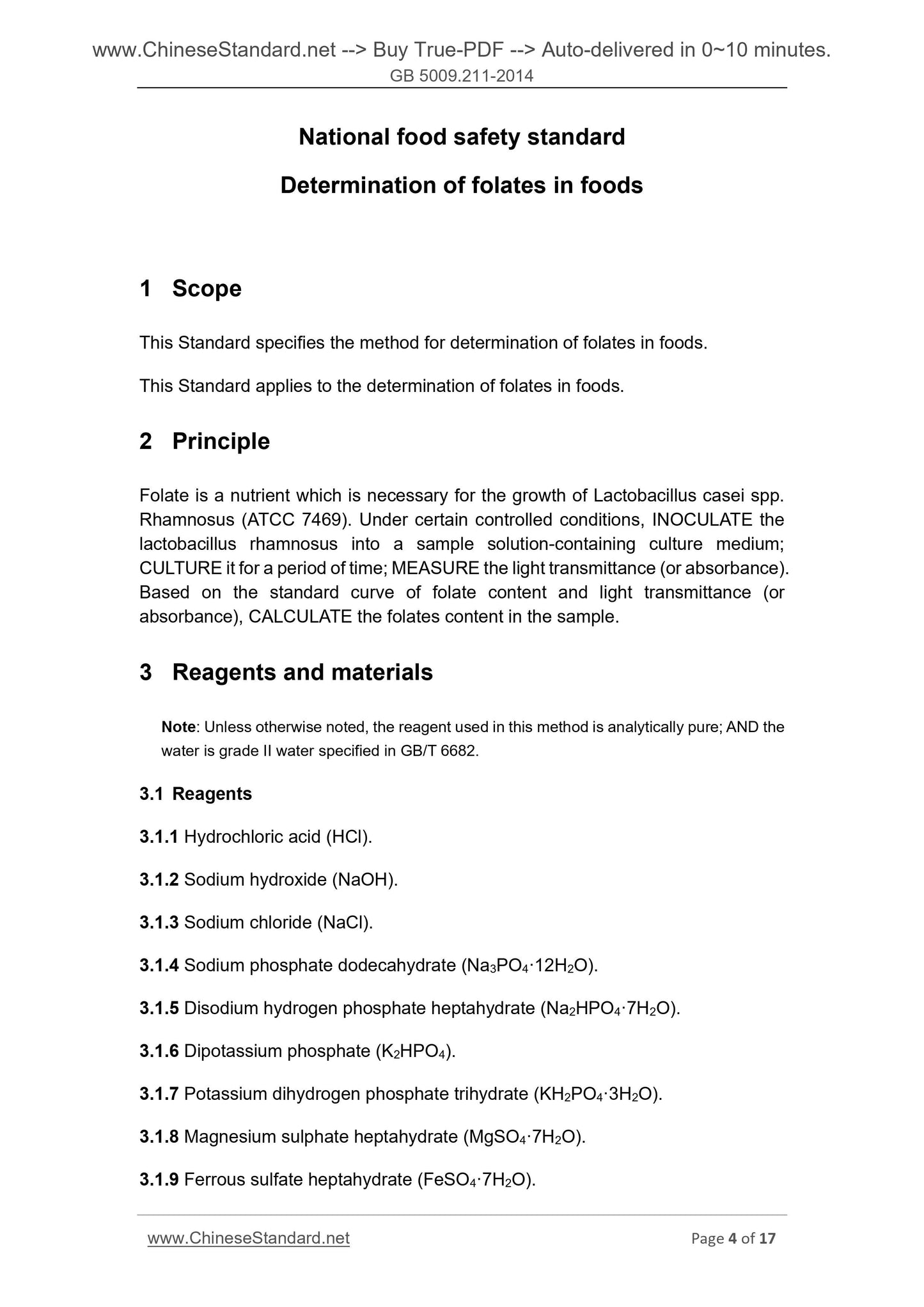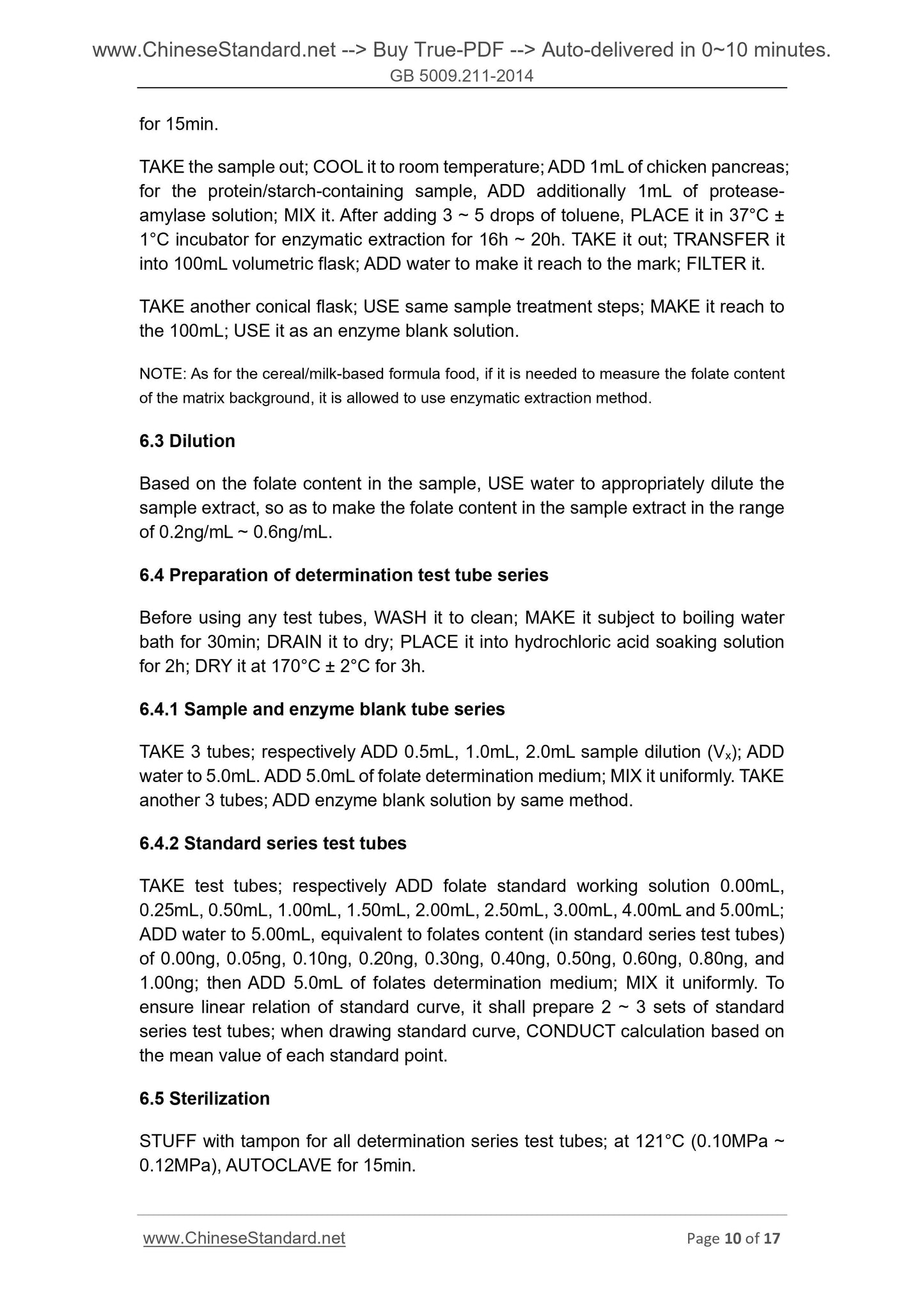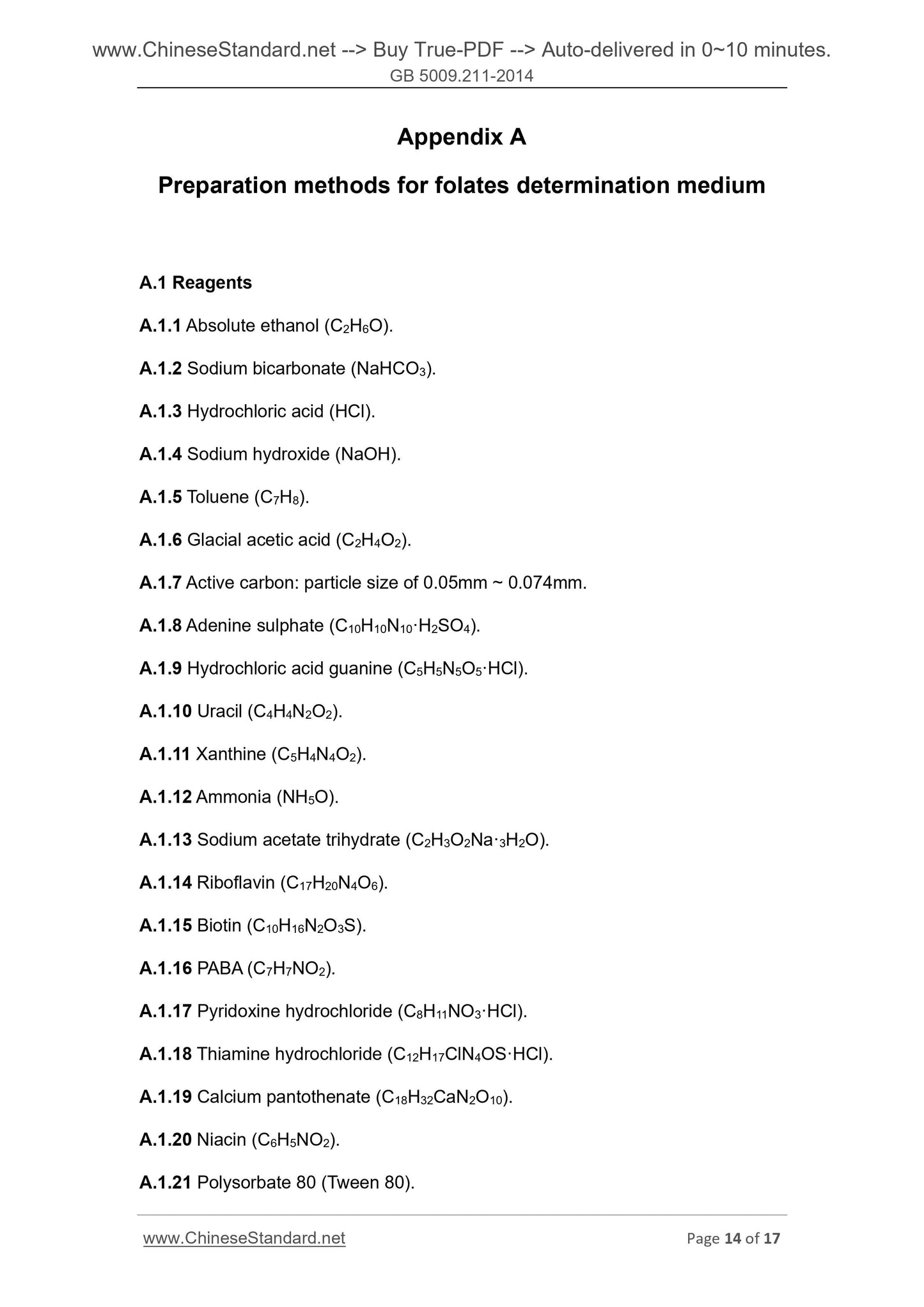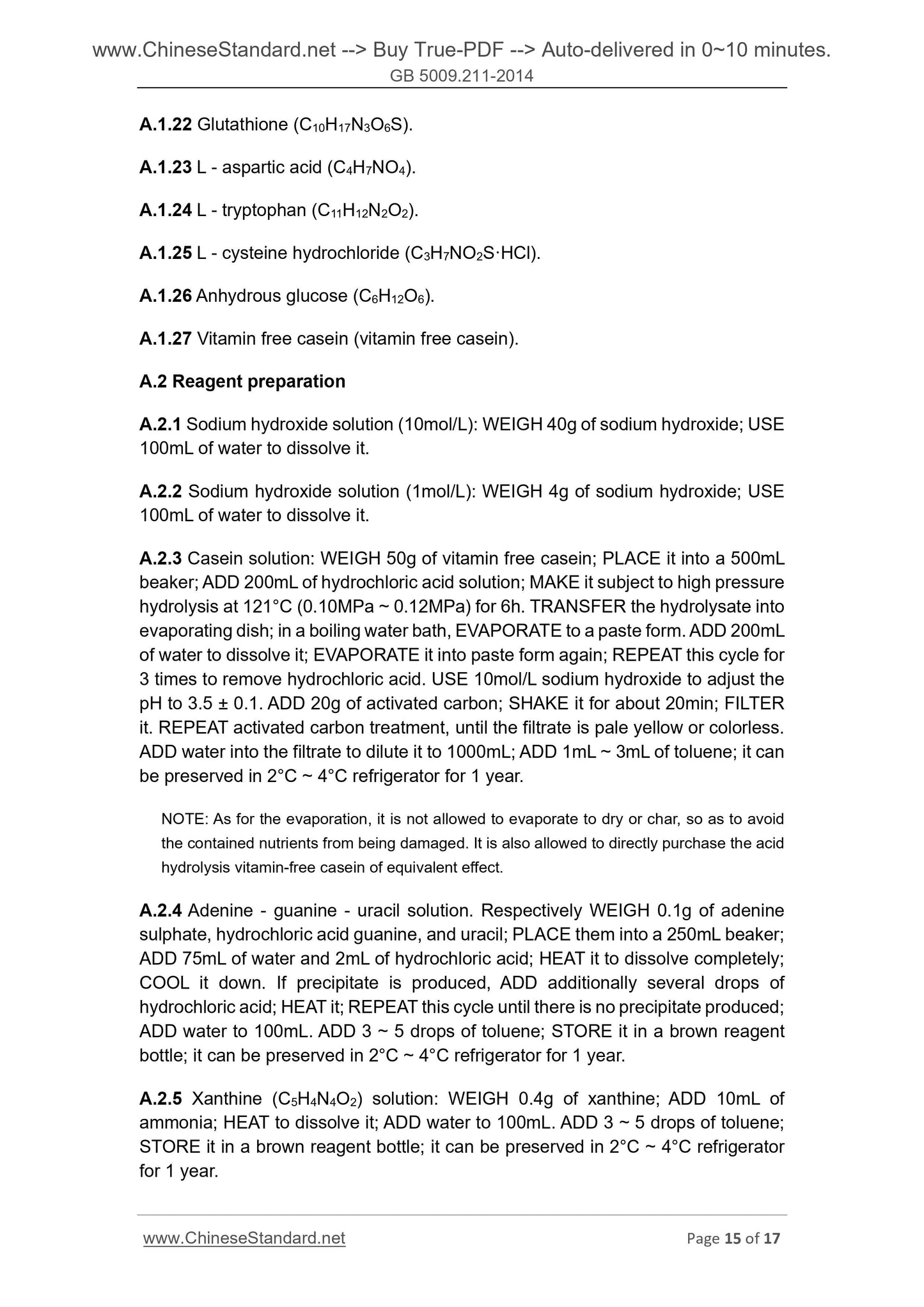1
/
of
8
PayPal, credit cards. Download editable-PDF & invoice in 1 second!
GB 5009.211-2014 English PDF
GB 5009.211-2014 English PDF
Regular price
$85.00
Regular price
Sale price
$85.00
Unit price
/
per
Shipping calculated at checkout.
Couldn't load pickup availability
GB 5009.211-2014: National Food Safety Standard -- Determination of folates in food
Delivery: 9 seconds. Download (and Email) true-PDF + Invoice.Get Quotation: Click GB 5009.211-2014 (Self-service in 1-minute)
Newer / historical versions: GB 5009.211-2014
Preview True-PDF
Scope
This Standard specifies the method for determination of folates in foods.This Standard applies to the determination of folates in foods.
Basic Data
| Standard ID | GB 5009.211-2014 (GB5009.211-2014) |
| Description (Translated English) | National Food Safety Standard -- Determination of folates in food |
| Sector / Industry | National Standard |
| Classification of Chinese Standard | C53 |
| Word Count Estimation | 12,154 |
| Date of Issue | 9/21/2015 |
| Date of Implementation | 3/21/2016 |
| Older Standard (superseded by this standard) | GB/T 5009.211-2008 |
| Regulation (derived from) | National Food Safety Standard Announcement 2015 No.7 |
| Issuing agency(ies) | National Health and Family Planning Commission of the People's Republic of China |
Share
